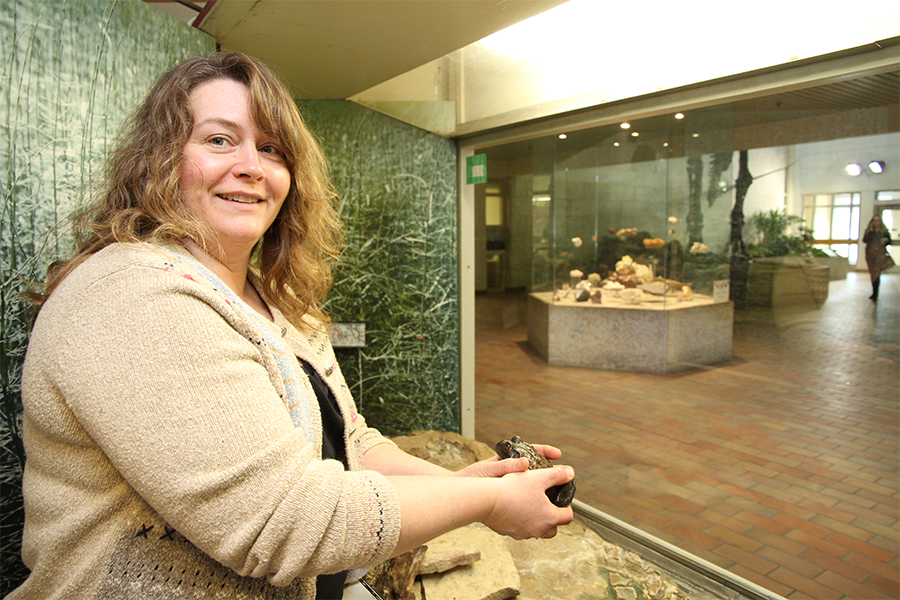
Walk with the animals, talk with the animals
Sue Johnson might have the most diverse—and interesting—job description on campus.
By Lesley Porter"If it moves or breathes or was alive at some point in time, I probably deal with it," said Johnson, technician at the Museum of Natural Sciences in the Geology and Biology Buildings.
A veterinary technician by trade, Johnson started with animal research in the health science disciplines in 1998 before making her way over to the interactive museum in 2003. "It's a museum of evolution—I'd like to think I've also evolved," she said with a laugh.
Besides occasionally leading tours and interacting with visitors—her conservative guess at a visitor count is about 30,000 people per year—her to do list also includes watering plants, feeding fishes and frogs, and cleaning the intricate crystal, mineral and rock specimens.
And if you are wondering who cleans and maintains the sky-high dinosaur fossil specimens—look no further. "That's me," she said.
And what is the best method for cleaning the dinosaur replicas? "Carefully," answered Johnson. Armed with Swiffer dusters, she gets a literal boost from Facilities Management Division, which supplies a mechanical lift that allows her to reach the top of the T-rex for a thrice-yearly dusting. The bones are subject to a more thorough cleaning every five years, "followed by a coat of Murphy's oil to make them shiny."
Johnson appreciates being part of something where she continuously learns about biology while imparting her wisdom on others. "The magnitude of what I get to learn in this job is huge—I find it fun," she said. "Someone once said that I am full of useless facts, but interesting ones. That's perfect, because when people are visiting the museum and I do get to interact with them, that's the one part of my job when there is not enough time in the day."

